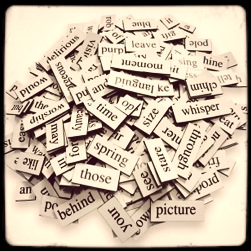Summer can be a mixed blessing for most children. While it gives them a little more freedom to play, explore extracurricular activities, and enjoy more free time, it also separates them from their natural love of learning.
The break leaves many of them at a loss after the summer, which is why most teachers set their startup lessons to be either refreshers or benchmarks. They want to know what these children retain over the summer.
Theoretically it works, unless these the children were already slipping in proficiency. Many children are. My daughter is among them.
Despite private school, she ended first grade with an F reading letter level on an A-Z scale, which represents an early reader at the start of first grade (not the end). She landed somewhere in the middle of her peers, which was better than my son did at that age in public school (and he had outperformed most other students there). But it really wasn't good enough.
If we assume that most children drop two reading letters over the summer — because they gravitate to books below their levels, if at at all — then we might also assume students like my daughter would automatically face challenges in second grade. Ergo, even if her new teacher started teaching the class at an H reading level, my daughter would have been critically behind as a student reading at a D level.
You can see the potential problem here, especially because many parents are unfamiliar with the various reading level benchmarks. They simply see their children reading and smile, thinking it's good enough. It's not. My daughter would have been lost after the first few weeks of school.
How parents can develop an accelerated reading program for young students.
Awareness is always the first step. Take some time to become aware of reading level benchmarks and find out where your child finished at the end of the school year. It doesn't matter which benchmarks the school uses — letter, numeric, or Lexille (a.k.a. Lexi). All benchmarks correspond to a grade level.
Some parents just don't know. While I knew my daughter's level this year, we never knew my son's reading level when he was that age. If you don't know, don't panic. Look up the books he or she has read or looked at since the end of the school year. A search with the book title and words "reading level" will usually produce a landing page that corresponds to one or all benchmarks.
Discover books to move them forward. Assume that the books are at their reading level (or a little less) because children (like adults) tend to gravitate toward what they can read easily and not what will improve their reading. Have them read whatever is on hand (or that they have been reading) out loud to demonstrate their strength at that level. You'll immediately get a sense of their proficiency.
Depending on how well the student reads, choose books that are at their level (if they are struggling) and slightly higher. Make sure you double check the approximate level too as all book publishers use different measurements. For example, Penguin Level 2 books are generally first grade books; some "I Can Read" Level 2 books are second grade books; and some Scholastic Level 3 books are second grade books.
Encourage kids to read the books out loud. It doesn't take much time. Between 15 minutes and one half hour of reading time every day is enough to propel them forward. Just remember that from their perspective, natural story breaks make more sense than random page counts or hard time quotas. They'll enjoy reading to a preset goal.
It's also best for parents to pick the books. Sure, children can provide input, but parents need to be aware that young readers pick books based on topics and characters they know. From experience, these better known characters tend to have clunkier writing and thinner story lines. Too many weak stories will cause young readers to become discouraged. So try to pick books with strong stories while paying attention to the language lessons.
Learning words by sight is a tiered process. Any time a student comes across a word that he or she doesn't know, block out everything except the first syllable (or block out everything except the root word) with your fingers. Most of the time, doing so will give them just enough confidence to get it right. And if they struggle, explain any rules that might help: e.g., sometimes "gh" sounds like "f" and sometimes it's silent.
The point is that you always want to help them solve a problem as opposed to reading the words for them (and letting them parrot you). Only when all else fails do you read the word and tell how why they missed it. Then ask them to reread the sentence and pay attention to whether they've mastered the word on the next occurrence. If they haven't, add it to an index card.
Flash card drills help create intangible rewards. Every morning after breakfast and/or after lunch or dinner, my daughter and I now work through flash cards that are mostly made up of missed words. There are only about eight or ten cards to go through one time. (It's important to only go through the pile one time per session to ensure long-term retention.) The only other words I include are instructional words; words that may appear in second grade instructions like "complete," "correct," "length," etc.
If my daughter gets it right with no assistance, we put a mark on the card. When she gets five marks on the card, she keeps the card and rips it up. As she rips these cards up, new ones are added so there are always plenty of cards at various stages of completion.
She thinks of it as an achievement reward and each ripped up card is celebrated. And if she misses a flashcard word in a story, I give her a one-time prompt that she already ripped the word up and we don't want to add it back. She immediately remembers. As an aside, never offer candy or monetary awards because you'll risk teaching them to love the reward and not a love for learning — which I believe is the ultimate goal of any teacher.
When my daughter returns to school this year, she will be well beyond her peers.
If you read through these accelerated reading steps, then you'll likely be left with one question. Does it work? Within four weeks, my daughter moved from F to K on an A-Z scale. At this pace, she might reach Q by the end of the summer. To put that into perspective, Q is the letter for a fourth grade reader.
A few days ago, I spoke to a group of educators about communication (and I'll be sharing the deck next week). It was during my presentation that I shared one of my observations about education: I have never met a kindergartener who wasn't enthusiastic about school. So if we want to solve the problems with education, then we have to look at what happens between kindergarten and the fourth grade.
I believe reading proficiency is one of the biggest things that happens or, perhaps, doesn't happen. Too many children have not met the reading level required for their grade level. Their parents don't know it.
At yet, reading is the core requirement for every other subject (including math, with its abundant word problems). It seems to me the problem is apparent. Unless the material is easy to read and the problem easily understood, how can they ever hope to understand it or solve it, let alone enjoy it? Exactly.
Literacy is the key to every other subject, along with a love of learning. It needs a little more attention. It needs a little more awareness. It needs more advocates. So how are you spending your summer?
The break leaves many of them at a loss after the summer, which is why most teachers set their startup lessons to be either refreshers or benchmarks. They want to know what these children retain over the summer.
Theoretically it works, unless these the children were already slipping in proficiency. Many children are. My daughter is among them.
Despite private school, she ended first grade with an F reading letter level on an A-Z scale, which represents an early reader at the start of first grade (not the end). She landed somewhere in the middle of her peers, which was better than my son did at that age in public school (and he had outperformed most other students there). But it really wasn't good enough.
If we assume that most children drop two reading letters over the summer — because they gravitate to books below their levels, if at at all — then we might also assume students like my daughter would automatically face challenges in second grade. Ergo, even if her new teacher started teaching the class at an H reading level, my daughter would have been critically behind as a student reading at a D level.
You can see the potential problem here, especially because many parents are unfamiliar with the various reading level benchmarks. They simply see their children reading and smile, thinking it's good enough. It's not. My daughter would have been lost after the first few weeks of school.
How parents can develop an accelerated reading program for young students.
Awareness is always the first step. Take some time to become aware of reading level benchmarks and find out where your child finished at the end of the school year. It doesn't matter which benchmarks the school uses — letter, numeric, or Lexille (a.k.a. Lexi). All benchmarks correspond to a grade level.
Some parents just don't know. While I knew my daughter's level this year, we never knew my son's reading level when he was that age. If you don't know, don't panic. Look up the books he or she has read or looked at since the end of the school year. A search with the book title and words "reading level" will usually produce a landing page that corresponds to one or all benchmarks.
Discover books to move them forward. Assume that the books are at their reading level (or a little less) because children (like adults) tend to gravitate toward what they can read easily and not what will improve their reading. Have them read whatever is on hand (or that they have been reading) out loud to demonstrate their strength at that level. You'll immediately get a sense of their proficiency.
Depending on how well the student reads, choose books that are at their level (if they are struggling) and slightly higher. Make sure you double check the approximate level too as all book publishers use different measurements. For example, Penguin Level 2 books are generally first grade books; some "I Can Read" Level 2 books are second grade books; and some Scholastic Level 3 books are second grade books.
It's also best for parents to pick the books. Sure, children can provide input, but parents need to be aware that young readers pick books based on topics and characters they know. From experience, these better known characters tend to have clunkier writing and thinner story lines. Too many weak stories will cause young readers to become discouraged. So try to pick books with strong stories while paying attention to the language lessons.
Learning words by sight is a tiered process. Any time a student comes across a word that he or she doesn't know, block out everything except the first syllable (or block out everything except the root word) with your fingers. Most of the time, doing so will give them just enough confidence to get it right. And if they struggle, explain any rules that might help: e.g., sometimes "gh" sounds like "f" and sometimes it's silent.
The point is that you always want to help them solve a problem as opposed to reading the words for them (and letting them parrot you). Only when all else fails do you read the word and tell how why they missed it. Then ask them to reread the sentence and pay attention to whether they've mastered the word on the next occurrence. If they haven't, add it to an index card.
Flash card drills help create intangible rewards. Every morning after breakfast and/or after lunch or dinner, my daughter and I now work through flash cards that are mostly made up of missed words. There are only about eight or ten cards to go through one time. (It's important to only go through the pile one time per session to ensure long-term retention.) The only other words I include are instructional words; words that may appear in second grade instructions like "complete," "correct," "length," etc.
If my daughter gets it right with no assistance, we put a mark on the card. When she gets five marks on the card, she keeps the card and rips it up. As she rips these cards up, new ones are added so there are always plenty of cards at various stages of completion.
She thinks of it as an achievement reward and each ripped up card is celebrated. And if she misses a flashcard word in a story, I give her a one-time prompt that she already ripped the word up and we don't want to add it back. She immediately remembers. As an aside, never offer candy or monetary awards because you'll risk teaching them to love the reward and not a love for learning — which I believe is the ultimate goal of any teacher.
When my daughter returns to school this year, she will be well beyond her peers.
If you read through these accelerated reading steps, then you'll likely be left with one question. Does it work? Within four weeks, my daughter moved from F to K on an A-Z scale. At this pace, she might reach Q by the end of the summer. To put that into perspective, Q is the letter for a fourth grade reader.
A few days ago, I spoke to a group of educators about communication (and I'll be sharing the deck next week). It was during my presentation that I shared one of my observations about education: I have never met a kindergartener who wasn't enthusiastic about school. So if we want to solve the problems with education, then we have to look at what happens between kindergarten and the fourth grade.
I believe reading proficiency is one of the biggest things that happens or, perhaps, doesn't happen. Too many children have not met the reading level required for their grade level. Their parents don't know it.
At yet, reading is the core requirement for every other subject (including math, with its abundant word problems). It seems to me the problem is apparent. Unless the material is easy to read and the problem easily understood, how can they ever hope to understand it or solve it, let alone enjoy it? Exactly.
Literacy is the key to every other subject, along with a love of learning. It needs a little more attention. It needs a little more awareness. It needs more advocates. So how are you spending your summer?


















































